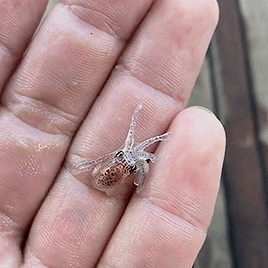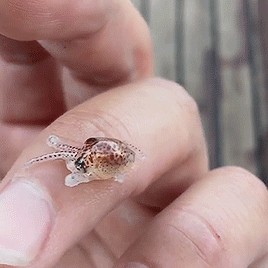Aren’t You Two From The Same Mountain Range?
aren’t you two from the same mountain range?
Like if 60 degrees is Far Too Hot
reblog if you want to fight me about it
More Posts from In-pursuit-of-knowledge-blog and Others


derin.goya.fishing on ig 🐙
everyone should watch Atlantis: The Lost Empire. it really sparks wonder and curiosity towards other civilizations!, living and dead. (and Milo Thatch is very clever.)
You only have to look at how cis hetero people try to interpret being transgender to see how history and anthropology inherently biased
“So they used to be female, but they’re now male”
“Sort of, but the thing is, he was never female. He was simply assigned the gender at birth but later recognized he was male.”
“But his records show he was female”
“I’m saying he’s never been female, he was just falsely identified as female”
“I don’t get it. So like, they used to be female but are now male biologically???”
“No… ugh, never mind, just understand they’re male”
They don’t get it because they don’t have context for it, so try to apply a context they understand. It’s not accurate, but it’s the kind of argument that becomes moot when they understand the most important details.
That’s what happens in history and anthropology as well.
There are existing concepts that colonial historians DO NOT HAVE ANY CONTEXT FOR and they will therefore attempt to apply their own context to those concepts, even if they are incorrect.
I use transgender people as an example because that’s one of the many concepts largely misunderstood by early colonial historians. They don’t GET the concept of a “third gender”or a “spiritual female”/ “Spiritual male” accepted as part of the community, they don’t understand that two genders are a concept THEY have that the community they study DOESN’T. They don’t understand that the language DOES NOT HAVE GENDERED PRONOUNS thereby eliminating hangups on gender that they themselves have.
Then they attempt to apply their own context – ie the context of a largely heterosexual, largely cis, and largely male community with pre-programmed ideas of what women are to them rather than what women are to the community they are studying. A society which, given English and other European languages, gender their pronouns in a way that isn’t done in other societies.
It’s the historical equivalent of 4Kids Dubs changing original Japanese names from anime into weird English names.
History and anthropology must be challenged CONSTANTLY by different outlooks less affected by white imperialist colonial mentality so that anything misunderstood in the past century or two can be remedied.
Like the fact that Viking women were warriors and buried as warriors, among other biased misinterpretations.

In 1941, Swiss engineer George de Mestral noticed after a hunting trip that burrs from burdock plants stuck to his pants and his dog’s fur.
He took the seed and looked at them through a microscope to find that this seed attaches to animal fur via the hooks on its surface to improve distribution.

Source: All of Nature on Blogspot
These hooks would latch onto anything loop-shaped, such as the fibers in his pants and his dog’s tangled fur. This inspired him to come up with the ‘Velcro’.
Velcro is a bio-mimicry of this burrs with small flexible hooks attached on its surface to attach to fluffy surfaces.


Although it goes by the name Velcro the generic name is a hook-and-loop fastener)

And depending on the load that needs to be held there are different types of hooks that are available:

The sound that the velcro makes when you rip it apart is oddly satisfying. It is made when the loops are ripped apart from the hooks.
It was always in my head that the hooks or the loops would break whenever you would rip it apart. But turns out, they are extremely flexible.

Source
For a long time I believed that this was the end of the story and that’s how far we had gone. But recently when I was trying to mount a board to the wall, I came across the 3M dual lock fasteners.
These use a mushroom shaped hook on both the sides to snap together in place.


Source
And evidently it turns out the mushroom fastener design were inspired from dragonflies who used it for stability during mating (check source video above for more).
This is great, but since this is made of plastic this surely would fail at higher temperatures. You need something robust to handle higher temperatures, and this is where the Metaklett comes into the picture:

A square metre of this fastener, called Metaklett (made of steel), is capable of supporting 35 tonnes at temperatures up to 800 ºC, (Video)
There is something exotic in the blend of nature and technology that is manifested in the Velcro, I just cannot put my hand on what it is.
Have a great day!

Robotic companions will never take the place of our furry best friends – but they can help us get them (and us) out of a jam! Test your robotic readiness by figuring out these futuristic scenarios.
When your hair is wavy/curly sometimes there is a fine line between “messy romantic waves” and “evil witch who lives in the woods.”
10 Things: Journey to the Center of Mars
May the fifth be with you because history is about to be made: As early as May 5, 2018, we’re set to launch Mars InSight, the very first mission to study the deep interior of Mars. We’ve been roaming the surface of Mars for a while now, but when InSight lands on Nov. 26, 2018, we’re going in for a deeper look. Below, 10 things to know as we head to the heart of Mars.

Coverage of prelaunch and launch activities begins Thursday, May 3, on NASA Television and our homepage.
1. What’s in a name?

“Insight” is to see the inner nature of something, and the InSight lander—a.k.a. Interior Exploration using Seismic Investigations, Geodesy and Heat Transport—will do just that. InSight will take the “vital signs” of Mars: its pulse (seismology), temperature (heat flow) and reflexes (radio science). It will be the first thorough check-up since the planet formed 4.5 billion years ago.
2. Marsquakes.
You read that right: earthquakes, except on Mars. Scientists have seen a lot of evidence suggesting Mars has quakes, and InSight will try to detect marsquakes for the first time. By studying how seismic waves pass through the different layers of the planet (the crust, mantle and core), scientists can deduce the depths of these layers and what they’re made of. In this way, seismology is like taking an X-ray of the interior of Mars.
Want to know more? Check out this one-minute video.
3. More than Mars.

InSight is a Mars mission, but it’s also so much more than that. By studying the deep interior of Mars, we hope to learn how other rocky planets form. Earth and Mars were molded from the same primordial stuff more than 4.5 billion years ago, but then became quite different. Why didn’t they share the same fate? When it comes to rocky planets, we’ve only studied one in great detail: Earth. By comparing Earth’s interior to that of Mars, InSight’s team hopes to better understand our solar system. What they learn might even aid the search for Earth-like planets outside our solar system, narrowing down which ones might be able to support life.
4. Robot testing.
InSight looks a bit like an oversized crane game: When it lands on Mars this November, its robotic arm will be used to grasp and move objects on another planet for the first time. And like any crane game, practice makes it easier to capture the prize.
Want to see what a Mars robot test lab is like? Take a 360 tour.
5. The gang’s all here.

InSight will be traveling with a number of instruments, from cameras and antennas to the heat flow probe. Get up close and personal with each one in our instrument profiles.
6. Trifecta.

InSight has three major parts that make up the spacecraft: Cruise Stage; Entry, Descent, and Landing System; and the Lander. Find out what each one does here.
7. Solar wings.
Mars has weak sunlight because of its long distance from the Sun and a dusty, thin atmosphere. So InSight’s fan-like solar panels were specially designed to power InSight in this environment for at least one Martian year, or two Earth years.
8. Clues in the crust.

Our scientists have found evidence that Mars’ crust is not as dense as previously thought, a clue that could help researchers better understand the Red Planet’s interior structure and evolution. “The crust is the end-result of everything that happened during a planet’s history, so a lower density could have important implications about Mars’ formation and evolution,” said Sander Goossens of our Goddard Space Flight Center in Greenbelt, Maryland.
9. Passengers.

InSight won’t be flying solo—it will have two microchips on board inscribed with more than 2.4 million names submitted by the public. “It’s a fun way for the public to feel personally invested in the mission,” said Bruce Banerdt of our Jet Propulsion Laboratory, the mission’s principal investigator. “We’re happy to have them along for the ride.”
10. Tiny CubeSats, huge firsts.

The rocket that will loft InSight beyond Earth will also launch a separate NASA technology experiment: two mini-spacecraft called Mars Cube One, or MarCO. These suitcase-sized CubeSats will fly on their own path to Mars behindInSight. Their goal is to test new miniaturized deep space communication equipment and, if the MarCOs make it to Mars, may relay back InSight data as it enters the Martian atmosphere and lands. This will be a first test of miniaturized CubeSat technology at another planet, which researchers hope can offer new capabilities to future missions.
Check out the full version of ‘Solar System: 10 Thing to Know This Week’ HERE.
Make sure to follow us on Tumblr for your regular dose of space: http://nasa.tumblr.com.

This slender-snouted crocodile skull in Carnegie Museum of Natural History’s Alcohol House was used to determine that each African region had a unique crocodile species. You can see this skull and its story on display at the new We Are Nature. Look for the Alcohol House media interactive in the gallery!
This post was originally posted on our curatorial assistant’s Instagram, which features specimens in the museum’s historic Alcohol House.




Jelly donut anyone? These “dinner plate” jellies usually live in the deep sea, but were recently spotted closer to the surface around Monterey Bay.
Local diver Dave Smith captured this video of one snacking on doliolids (the gelatinous things floating around in the water and also in the jelly’s pink gut tissue). Just in time for National Donut Day!
-
 lizard-friend2-blog reblogged this · 6 years ago
lizard-friend2-blog reblogged this · 6 years ago -
 lizard-friend2-blog reblogged this · 6 years ago
lizard-friend2-blog reblogged this · 6 years ago -
 lizard-friend2-blog reblogged this · 6 years ago
lizard-friend2-blog reblogged this · 6 years ago -
 lizard-friend2-blog reblogged this · 6 years ago
lizard-friend2-blog reblogged this · 6 years ago -
 lizard-friend2-blog reblogged this · 6 years ago
lizard-friend2-blog reblogged this · 6 years ago -
 in-pursuit-of-knowledge-blog reblogged this · 7 years ago
in-pursuit-of-knowledge-blog reblogged this · 7 years ago -
 oddblonde21 liked this · 7 years ago
oddblonde21 liked this · 7 years ago -
 in-pursuit-of-knowledge-blog reblogged this · 7 years ago
in-pursuit-of-knowledge-blog reblogged this · 7 years ago -
 in-pursuit-of-knowledge-blog liked this · 7 years ago
in-pursuit-of-knowledge-blog liked this · 7 years ago -
 corvus69 liked this · 7 years ago
corvus69 liked this · 7 years ago
Once I was made of stardust. Now I am made of flesh and I can experience our agreed-upon reality and said reality is exciting and beautiful and terrifying and full of interesting things to compile on a blog! / 27 / ENTP / they-them / Divination Wizard / B.E.y.O.N.D. department of Research and Development / scientist / science enthusiast / [fantasyd20 character]
162 posts
